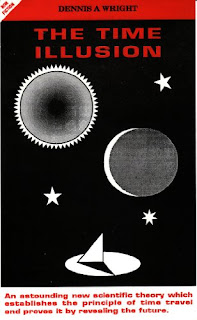Chemtrails
Today conspiracy theorists are so often derided but eventually proved correct. There is one theory to which I take exception, that is the view that our governments are trying to kill off populations with the use of chemical agents in jet exhausts. It is a sad indictment on society that many people do seriously believe that governments are trying to kill them off, but the actions of many politicians could be construed as attacks on health, wealth, life, and liberty. It is more likely that politicians just do not care, than that they are deliberately planning to kill citizens.
Some of the idea
that there are chemicals being sprayed to kill people may be based on actual
spraying that is done to spray herbicides or even insecticides in agricultural
areas. In the early 1990’s herbicide was sprayed on the pine plantations near
Ballarat, Victoria in Australia to eliminate weeds. Unfortunately, on the day
of the spraying the wind was in the wrong direction and the spray settled over
the town. We were living there at the time, and I was forced to go to the
emergency department with severe asthma that night. Many other people also
suffered difficulties, some more severe than others. This was not an
intentional act, but an accident caused by the carelessness of those entrusted
with the spraying.
Seeding of
clouds to generate rainfall has also been a common practice and footage from
inside aircraft pumping chemicals or dry ice onto the clouds is also used by
conspiracy theorists to convince people of their claims. The vapour trails of
normal commercial aircraft do not have added chemicals or harmful additives,
commercial fuels are predominantly hydrocarbons Kerosene is most commonly used
but methane, propane and other hydrocarbons can be used. Biofuels such as
alcohol are also suitable as jet fuel.
The formula for
Kerosene is C15H32 and when it is oxidised, burned as
fuel, each carbon molecule attaches to two oxygen molecules to create CO2,
the hydrogen atoms will also attach to oxygen molecules, but two hydrogen
molecules will attach to each oxygen molecule to create a molecule of H2O.
The exhaust of these aircraft are simply water vapour and carbon dioxide, the
trail that appears behind the aircraft is simply the water vapour condensing in
the cold air at high altitude. Both water vapour and carbon dioxide are
greenhouse gasses but the CO2 sinks to the ground fairly quickly as
it is heavier than the nitrogen and oxygen that make up the bulk of the atmosphere.
The Earth’s CO2 is most concentrated at low levels either at or
below sea level, which is why no trees grow on high mountains, there is
insufficient CO2 to support them. Only mosses and lichen, which grow
close to the ground, can survive the lack of atmospheric carbon at high
altitudes.
Water vapour,
which is two thirds hydrogen (the lightest of all gasses, fifteen times lighter
than air), can remain high in the atmosphere for long periods. Water vapour is also
the greenhouse gas that has the greatest effect on temperature, frosts will not
form when there is cloud cover but form even in warmer areas under clear skies
even in deserts nights can be freezing. Aircraft are great contributors to the
amount of water vapour in the atmosphere, studies done after the introduction
of the passenger jet claimed that atmospheric water vapour over the Atlantic
increased fifteen percent in the first ten years of regular services. These
services began in the late 1950’s and early 1960’s, so plenty of time has
elapsed to allow water vapour levels to further increase.
Water vapour
(clouds) have one further property, apart from acting as a blanket to prevent
heat escaping form the Earth, they reflect sunlight and prevent heat from
reaching the Earth. The clouds can then cool, and the molecules of water vapour
begin to form ice crystals and as they do they begin to fall toward the ground,
picking up further molecules as they fall. If the air is cold enough, they
begin to form into snowflakes but if it is not that cold, they may form layers
of ice and become hail, or melt into droplets and fall as rain. Apart from
warming the world water vapour can become a regulator of temperature, which is
why the tropics are not only the warmest places on Earth but also the wettest.
Sulphur gasses
from pollution or from volcanic activity can also combine with water vapour to
form sulphuric acid, or acid rain. This is not only a problem that causes
possible damage to living things but while in the air sulphuric acid reflects
more sunlight than water vapour alone, leading to far colder conditions.
The summation
of all this is that we have little to worry about from so called chemtrails,
but pollution and volcanoes may yet kill us all. The pressure for us all to
switch to electric vehicles is a commercial one and has no effect on the
planet. A recent calculation of the carbon footprint of the most recent climate
conference concluded that all those private jets and hotels and other transport
was equal to driving three hundred and seventy thousand cars for a week.
If we truly
want to reach net zero carbon emissions, we should stop importing goods from
countries where labour is cheap. Five of the huge container ships used to
transport raw materials one way and bring back manufactured goods will burn as
much fuel as all the cars on Earth. There are thousands of these huge ships
plying the oceans every day. Making goods locally would reduce all that carbon.
The downside of that will be that thousands of people in poorer countries will
become unemployed and possibly starve, but we would achieve net zero carbon –
if that is our sole aim.
Don’t miss my new book!

Comments